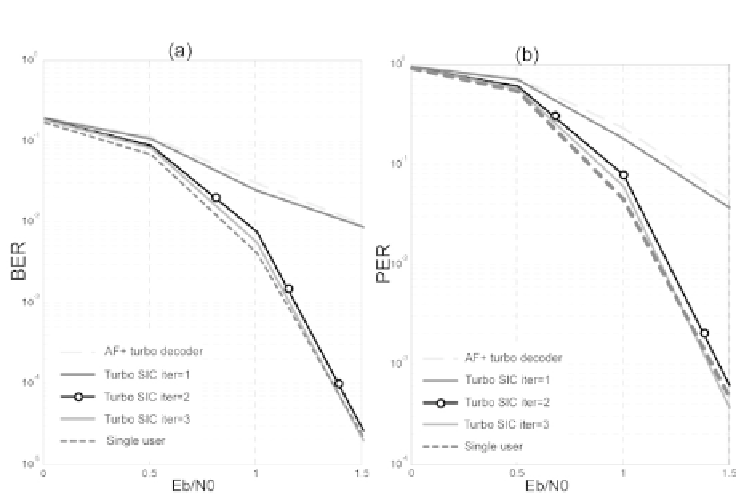Cryptography Reference
In-Depth Information
Figure 11.27 - Performance of the turbo SIC decoder: (a) mean Binary Error Rates
(BER) (b) mean Packet Error Rates (PER).
K
=31
users, spreading factor of 31, with
frame size 640 bits.
by a RAKE filter (filter adapted to the spreading sequence convolved with the
transfer function
c
k
(
t
)
in the
ICU
m,k
) unit, and to replace the spreading function
by the spreading function convolved by
c
k
(
t
)
. This new structure is called a
turbo SIC/RAKE decoder.
The turbo
SIC
/
RAKE
decoder is used particularly in the context of the
uplink in the UMTS-FDD system.
11.3
Conclusions
In this chapter, we have presented the first two systems to have benefited from
applying the turbo principle to a context other than error correction coding. In
the first part, we have described the principle of turbo equalization, which relies
on an iterative exchange of probabilistic information between a SISO equalizer
and a SISO decoder. The SISO equalizer can take different forms according
to the chosen optimization criterion. We have presented two types of SISO
equalizers: the BCJR-MAP equalizer, operating on the trellis representation of
the ISI channel, and the MMSE equalizer, which uses linear filtering. The MAP
turbo equalizer leads to excellent performance compared to the conventional
receiver. However, this approach is often avoided in practice since it leads to a
very high computation cost. We have discussed several solutions for reducing



